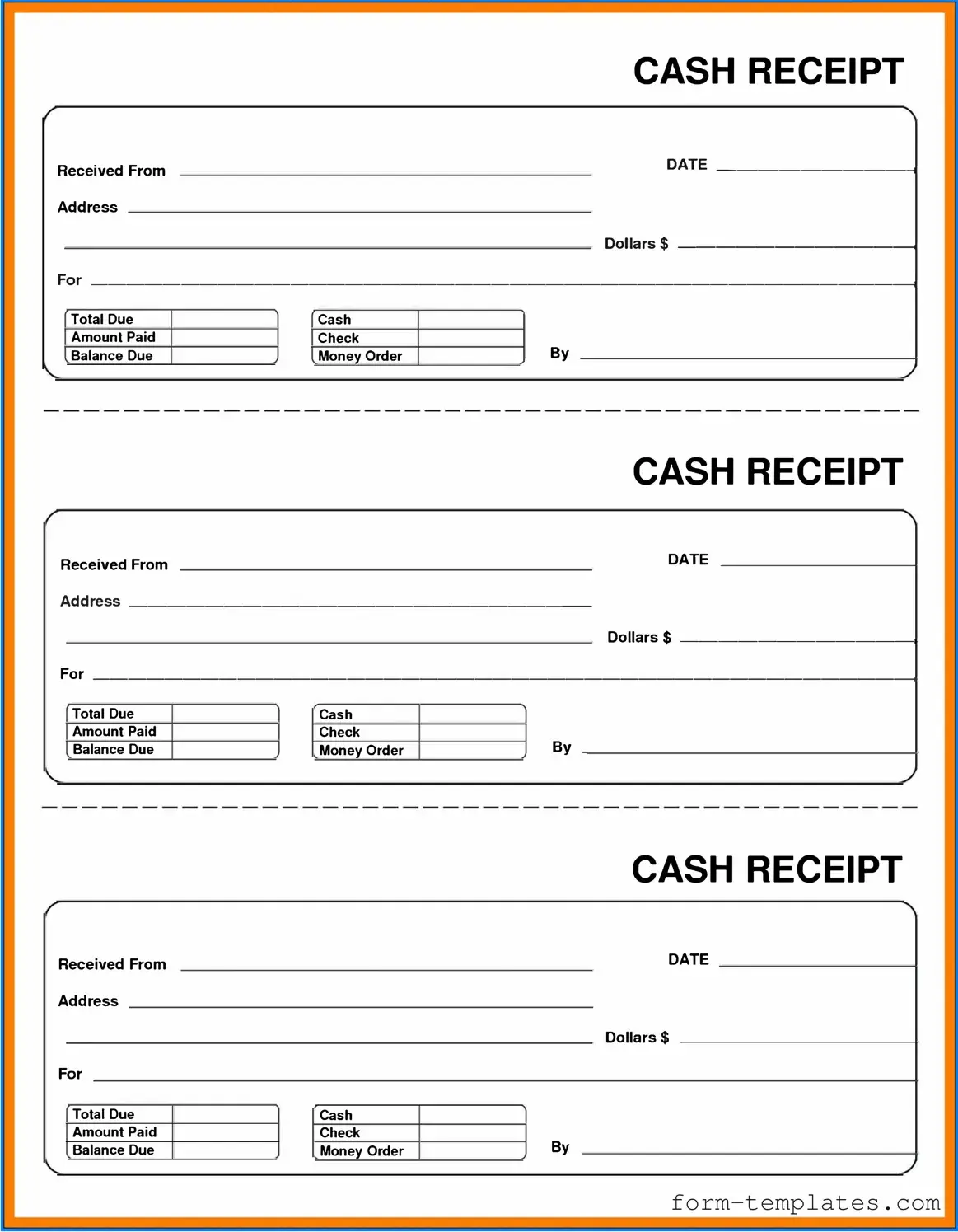A Cash Receipt form is a document used to record the receipt of cash payments. This form helps businesses keep track of money received from customers or clients. It typically includes important details such as the date of the transaction, the amount received, the purpose of the payment, and the name of the payer. By maintaining accurate records, businesses can ensure proper accounting and financial management.
A Cash Receipt form should be used whenever cash is received for goods or services. This can include payments made in person, by mail, or electronically. It is important to document these transactions to maintain accurate financial records. Some common scenarios for using this form include:
-
Payments made by customers for products sold.
-
Deposits received for services rendered.
-
Cash donations or contributions to an organization.
A Cash Receipt form generally contains several key pieces of information to ensure clarity and accuracy. The following details are often included:
-
Date of the transaction.
-
Name of the payer.
-
Amount of cash received.
-
Purpose of the payment.
-
Signature of the person receiving the cash.
This information helps both the payer and the recipient maintain clear records of the transaction.
Completed Cash Receipt forms should be stored securely to protect sensitive financial information. It is advisable to keep both physical and electronic copies. For physical forms, consider using a locked filing cabinet. For electronic forms, ensure they are saved in a secure location with restricted access. Regularly back up electronic files to prevent loss of important data.
Yes, a Cash Receipt form can also be adapted for electronic payments. While cash payments are straightforward, electronic payments such as credit card transactions or bank transfers can be documented using the same form. In these cases, it is important to note the payment method clearly and include any transaction reference numbers for tracking purposes.
If a mistake is made on a Cash Receipt form, it is important to correct it promptly. The best practice is to draw a single line through the error, write the correct information next to it, and initial the correction. This ensures that the original entry is still visible, which can be important for record-keeping. In some cases, it may be necessary to issue a new form altogether, especially if the error is significant.

